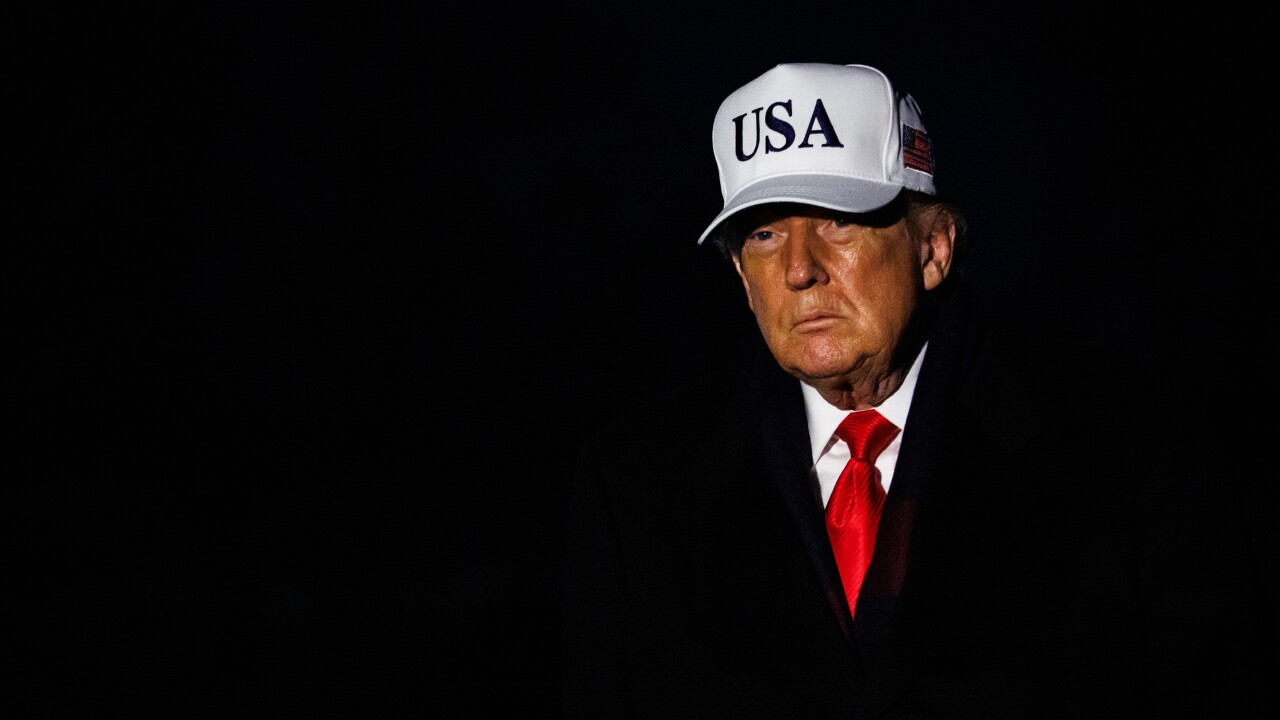-
Tangerine, Simple, American Express and Discover are some of the financial institutions that use Apple's Touch ID fingerprint-authentication technology to let consumers replace passwords or to add security.
December 11 -
The biggest bank in the country now lets opted-in mobile Android and Apple customers view their balances without entering their user names and passwords.
December 4 -
Few banks consistently earn more than four stars in the Apple and Google App Stores. The rare high performers listen to users and pioneer new features.
September 9 -
The quest for secure, yet really quick and easy enrollment and login for bank accounts, has evaded banks for years, and its become more important than ever.
September 17

U.S. Bank's updated mobile app was perhaps not up-to-date enough for its critics.
"Why isn't Touch ID supported yet? This is the one thing I was hoping for when I heard an update was coming," wrote iPhone user "insanitylater" in an App Store review. "There's no excuse for not using Touch ID in a modern banking app."
Well, insanitylater, you'll be happy to know that Touch ID is "imminent," according to
"We are running as fast as we can to get it up online," Gaston said Wednesday about Touch ID, the Apple technology that allows users to log in with their thumb rather than have to go through the archaic task of typing in a password.
"Five months ago, no one had it," he said. "Things aren't changing rapidly. They are changing immediately. It now goes from 'no one had it' to 'everyone should have it.' "
Welcome to the world of accelerating customer demands. Mobile users are measuring their experience with their bank's mobile app against every other mobile experience they have. For banks, that means a balancing act between their own strategies and the latest technology to hit the mainstream.
"The tide is rising in the sea of expectations. Consumers are expecting that their mobile banking experience is going to be better, optimized and tailored to the latest technology," said Ken Hans, executive director of financial services at Blackstone Technology Group.
The actual timeline of Touch ID adoption is a bit different than Gaston describes. A few banks and card companies —
But the reviews — which have collectively left the latest version of U.S. Bank's retail app with a one-star rating — provided instant feedback: consumers want Touch ID.
So, why not include it with the big release? Or why not wait until those functions were ready to release the update? Such an approach would put the bank in a cycle of trying to time big releases with the latest technology. This latest app is an attempt to move away from that — it is a wholesale rebuild meant to be amenable to changes as they come up.
"The challenge today is that it is Touch ID, but who knows what tomorrow is going to be? If we are constantly waiting for the next big thing we'd never get out the door," Gaston said. "We don't want to be doing this big of a wholesale change often, but we needed to draw the line and get it out the door and then continue to improve it."
U.S. Bank has been historically considered an
"We have a heritage of being ahead and first in mobile," he said.
That heritage perhaps makes the slew of negative comments on the App Store and social media surprising. Specifically, reports about crashes are a major problem, Hans said.
"Reviews about features are the better ones, because then you know what to put on the road map," Hans said. "But when it doesn't work, that is a position you don't want to be in, because if you frustrate the customers enough they might leave."
Hans said the bad reviews could be an indication that U.S. Bank didn't do an adequate job of testing the app on various phones with various operating systems.
"It bespeaks of the fact that they underestimated" testing, Hans said. "You gotta know that it works."
The crashes, Gaston said, have been narrowed down to a specific set of people: iPhone users who are still using its iOS 7 operating system. Apple's most current version is iOS 9.
"It is a very small population, and as it turns out a very vocal population," Gaston said. "It is an operating system version issue, but it is still an issue and a fix is coming on the next release."
Gaston said the app was tested against iOS 7 and it performed "fine in our environment." He added that some of the emphasis may have been put on more recent operating systems. Also, the company began rolling out the app to Android users in June on a limited basis and was working out bugs as it went along.
"We do have incredibly robust testing," he said. But given the chance to do it over, "we would dig into that a little further. My motto is, 'Don't make the same mistake twice.' "
Of course, tweets and reviews only tell one side of a story, typically. They tend to trend to the negative point of view because a disgruntled customer is more likely to comment than a satisfied one. Besides the unexpected problems for the iOS 7 users, Gaston said the blowback has been on par with his expectations and he thinks the score will improve as customers adjust to the new system and the company rolls out adjustments and improvements to it.
Other performance measures, for instance those compiled by the analytics firm Foresee, show satisfaction is trending higher than 90%.
"One of the key metrics to us is if customers can get done what they came to do, because this is a utility," Gaston said. "Those are very solidly in the '90s. That is a strong score."





